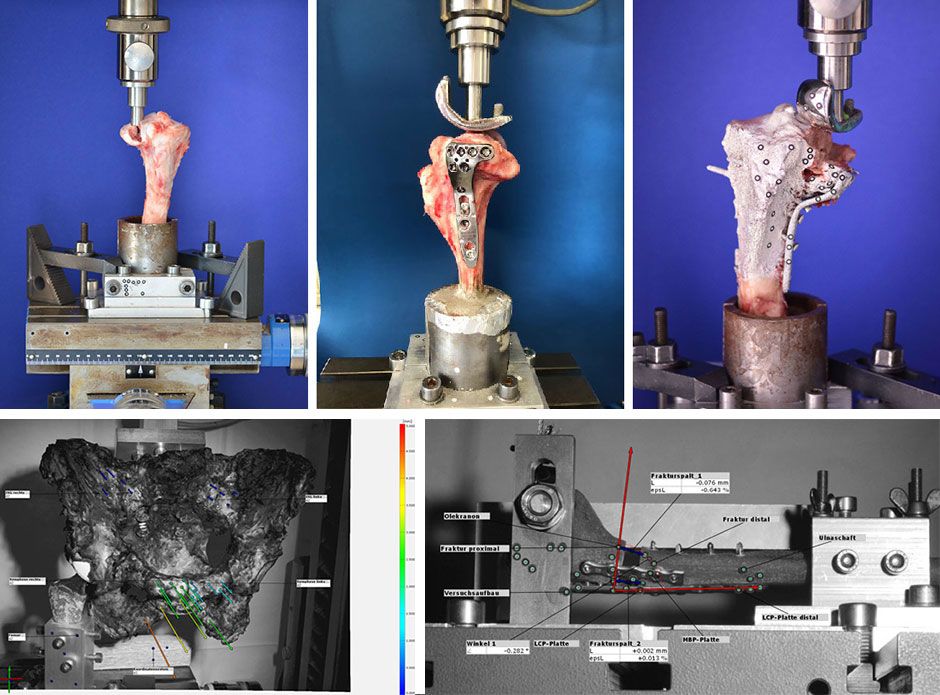In order to achieve this, the desired fractures are first simulated (Figure 1: Simulation of a fracture of the lateral tibial plateau). As bone models we use human bones from body donors, animal bones - e.g. of porcine origin – as well as artificial bone models available as test models. Once the desired fracture type has been successfully created, the fracture is anatomically aligned and stabilized in the same way as in clinical fracture treatment.
The bones are then subjected to a biomechanical stability test in a testing machine. The test protocol meets the forces that occur in human bones as a result of stress and muscle tension. After the stress test, differences between the various stabilization techniques are analyzed with regard to loosening of the implant, screw pull-outs and maximum forces.
This way, the advantages and disadvantages of different osteosynthesis procedures can be identified and conclusions about patient-specific fracture treatment can be drawn.

